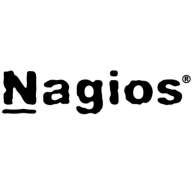

Nagios XI and Elastic Observability both compete in network and system monitoring solutions. Elastic Observability has the upper hand, given its powerful search options and machine learning capabilities.
Features: Nagios XI offers extensive monitoring capabilities, relies on a vast array of plugins, and is highly customizable through scripting. It is open-source, benefiting from a large plugin community. Elastic Observability integrates logs and metrics, has advanced machine learning features, and supports robust data analysis and visualization through Kibana.
Room for Improvement: Nagios XI requires manual configuration and lacks cluster and failover options. It has complexity due to separate configurations and lacks web-based APIs. Elastic Observability has limited APM metrics and visualization, and could benefit from better real-time monitoring.
Ease of Deployment and Customer Service: Nagios XI is usually deployed on-premises, requiring manual setup with community-driven support. Elastic Observability supports on-premises, hybrid, and public cloud options, requiring complex setup. Nagios XI provides prompt support, with users often relying on forums.
Pricing and ROI: Nagios Core is free and provides a flexible pricing model with Nagios XI, though support can be costly. Elastic Observability uses a tiered usage-based pricing system, which can be expensive for small entities but cost-effective for larger deployments.
Elastic Observability seems to have a good scale-out capability.
What is not scalable for us is not on Elastic's side.
If the user interface isn’t presenting data well, it becomes difficult to manage when scaling.
It is very stable, and I would rate it ten out of ten based on my interaction with it.
Elastic Observability is really stable.
It is very stable.
It lacked some capabilities when handling on-prem devices, like network observability, package flow analysis, and device performance data on the infrastructure side.
One example is the inability to monitor very old databases with the newest version.
Elastic Observability could improve asset discovery as the current requirement to push the agent is not ideal.
Many tools have poor user interfaces, making them hard to manage and navigate.
The GUI could be improved. It's a bit too basic.
Elastic Observability is cost-efficient and provides all features in the enterprise license without asset-based licensing.
The license is reasonably priced, however, the VMs where we host the solution are extremely expensive, making the overall cost in the public cloud high.
We are using the free, open-source version.
The pricing for the Nagios XI product is good and better than other solutions.
The most valuable feature is the integrated platform that allows customers to start from observability and expand into other areas like security, EDR solutions, etc.
the most valued feature of Elastic is its log analytics capabilities.
All the features that we use, such as monitoring, dashboarding, reporting, the possibility of alerting, and the way we index the data, are important.
Nagios XI simplifies our setup and reduces the time spent configuring monitoring tools.
The alerting system is very effective.


Elastic Observability is primarily used for monitoring login events, application performance, and infrastructure, supporting significant data volumes through features like log aggregation, centralized logging, and system metric analysis.
Elastic Observability employs Elastic APM for performance and latency analysis, significantly aiding business KPIs and technical stability. It is popular among users for system and server monitoring, capacity planning, cyber security, and managing data pipelines. With the integration of Kibana, it offers robust visualization, reporting, and incident response capabilities through rapid log searches while supporting machine learning and hybrid cloud environments.
What are Elastic Observability's key features?Companies in technology, finance, healthcare, and other industries implement Elastic Observability for tailored monitoring solutions. They find its integration with existing systems useful for maintaining operation efficiency and security, particularly valuing the visualization capabilities through Kibana to monitor KPIs and improve incident response times.
Nagios XI provides monitoring of all mission-critical infrastructure components, including applications, services, operating systems, network protocols, systems metrics, and network infrastructure. Third-party add-ons provide tools for monitoring virtually all in-house and external applications, services, and systems.
Nagios XI uses a powerful Core 4 monitoring engine that provides users with the highest levels of server monitoring performance. This high degree of performance enables nearly limitless scalability and monitoring powers.
With Nagios XI, stakeholders can check up on their infrastructure status using the role-based web interface. Sophisticated dashboards enable access to monitoring information and third-party data. Administrators can easily set up permissions so users can only access the infrastructure they are authorized to view.
Nagios XI Benefits and Features
Some of the benefits and top features of using Nagios XI include:
Reviews from Real Users
Nagios XI stands out among its competitors for a number of reasons. Several major ones are its integration options and monitoring abilities, as well as its alerting features.
David P., a senior DevOps engineer at EML Payments Ltd, writes, “We use Nagios as a network discovery tool. We use Nagios to maintain our uptime statistics and to monitor our services. It has allowed us to be much more sophisticated in our monitoring and alerting.”
An IT-OSS manager at a comms service provider notes, “Nagios XI has a custom API feature, and we can expose custom APIs for our integration. This is a great feature.”
We monitor all IT Infrastructure Monitoring reviews to prevent fraudulent reviews and keep review quality high. We do not post reviews by company employees or direct competitors. We validate each review for authenticity via cross-reference with LinkedIn, and personal follow-up with the reviewer when necessary.